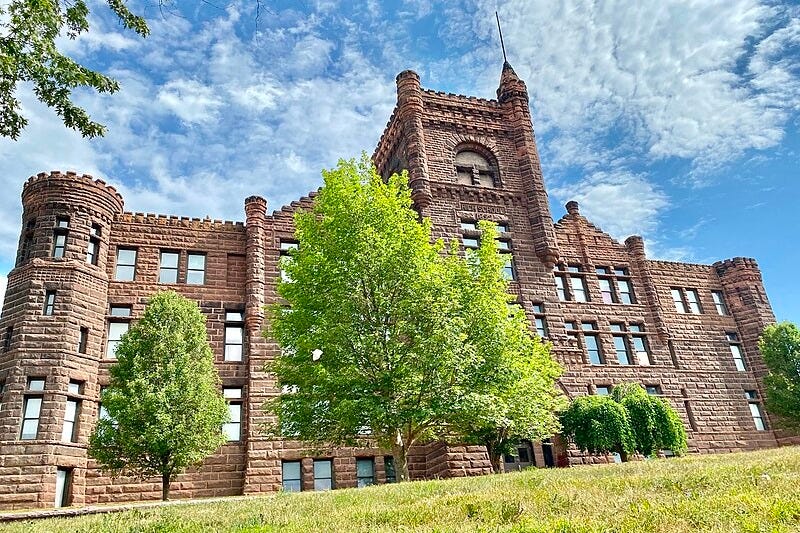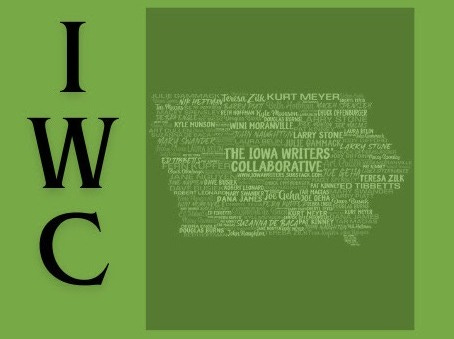The rise and fall of a major Jewish community in the Midwest -- and how that community changed the world
First of two stories
Once upon a time, there were three men with Jewish family roots in Sioux City, Iowa, and they changed the world.
It may sound like a fairy tale, but it is very real.
All three descended from immigrant ancestors who must have thought they were choosing to reside in a major urban growth center in America.
They were wrong.
And yet, the first-generation Jewish community of Sioux City produced descendants whose work shook the foundations of both science and world affairs.
The story begins with three families
One: Ben Prusiner immigrated with his mother and siblings from Mogilev, Belarus, Russia, to Sioux City, Iowa, at age 8 in 1896. As an adult, he worked his way up to credit manager at Davidson Bros. Department Store in Sioux City, whose owners, like Benjamin, were Jewish. He married Ethel Galinsky of Omaha in 1908, and they had a son, Lawrence, in 1912. Lawrence became an architect, married a woman from Cincinnati, Ohio in 1939, served in World War II, and relocated with his family to Des Moines. Their first child, a son, Stanley B. Prusiner, was born in Des Moines in 1942.
Two: Jacob Heeger was born and grew up in Vitebsk, Belarus, Russia, where he married in 1880. He and his wife had 11 children; five survived to adulthood. In 1906, with three young boys still at home and growing up, the Heegers decided to join the hundreds of thousands of Russian Jews who were leaving for America because of untenable conditions for them in Russia. The Heegers settled in Sioux City, Iowa, where Jacob went to work as a street peddler. Peter Heeger, the youngest of the children, was 5. He grew up in Sioux City and married Alice Hinkin of Omaha in 1931. Their son, Alan J. Heeger, was born in Sioux City in 1936.
Three: Abram Koval immigrated to the growing Jewish community of Sioux City, Iowa, from the village of Telekhany, Belarus, Russia, in 1910. The woman he loved – but left behind until he could get his footing in a new country with a new language – followed him 10 months later. With Abram making a decent living as a carpenter, they married in Sioux City in June 1911. The first of their three sons was born in 1912. Their second son, George Koval, was born in Sioux City in 1913; a third would follow in 1919.
There are several obvious common threads here, including the persecution of Jews in Russia, and the fact that all three families came from Belarus and settled in Sioux City. But the most startling commonality does not appear in the summaries above. Within two generations of the time these families arrived in Sioux City, there was a descendant in each family who achieved worldwide fame with actions that virtually changed the world.
Two of the three descendants highlighted in the introductory paragraphs above became Nobel laureates, having made transformative discoveries in their respective fields of science.
Prusiner won the Nobel Prize for medicine/physiology in 1997. Heeger won the Nobel Prize for chemistry in 2000.
What about Koval?
Well, his path to fame was a bit different.
Koval became a Russian Spy who passed U.S. atomic secrets to Russia in the 1940s. He was never caught.
Yep. Two Nobel Prize winners and an ace Russian Spy; all with Jewish roots in Sioux City. More to come about the work of each of these men.
How Sioux City became one of the largest centers of Jewish settlement in the Upper Midwest
Jews settled in Sioux City as early as the 1860s.
By World War I, estimates of the Jewish population in Sioux City ranged from 2,500 to 3,000. It was one of the largest centers of Jewish populations in the Upper Midwest – lagging only Minneapolis-St. Paul, Omaha, and Des Moines in a five-state region.
Moreover, Sioux City itself seemed on track for major overall growth. Its population had soared from around 7,000 to more than 35,000 from 1880 to 1890. It would double again by 1920. Some of its early settlers had dreams of its future in the image of Chicago.

Sioux City, however, would end up only a fraction the size of the other focal points in the Upper Midwest for Jewish settlement, and its Jewish community would dissipate as time passed.
World War II was the first transformative event for the Jewish communities of the Midwest. It changed everything. Many of the Jewish men who left the mid-size cities of the Midwest to fight in World War II would not return to their hometowns. They would settle, instead, in the large cities of the South and Southwest, where opportunities were abundant, the weather was better in the winter, and the recent arrival of air-conditioning had made the summers bearable. In Sioux City, three out of four Jews who were in the Armed Forces at the end of the war in 1945 did not return to Sioux City after the war. Many of them ended up in Southern California.
Among the Jewish families that remained in Sioux City and similar Midwestern small cities in the 1950s, many in the next generation would send their sons and daughters to Eastern colleges and universities; they, too, would not return to the Sioux Cities of Mid-America.
Today, there are no more than about 300 Jews left in Sioux City, maybe less.
One of the things that boosted the Jewish population of Sioux City in the early years of the late 1800s and early 1900s was the fact that it became a magnet city for the several hundred thousand Jews who emigrated from Belarus, one of the most concentrated regions of Jewish settlement in Eastern Europe.
It is not known exactly how that happened, but two factors likely played into it.
One was that some of the early Jewish settlers in Sioux City who came from Belarus likely wrote letters to relatives and friends back home extolling Sioux City as a place of settlement. It was open to Jews and it provided economic opportunities. In an era before the existence of social media, letters to home were a primary means of spreading the word.
Another factor was the determination of the established Jewish community in New York to re-route some of the immigrating Jews of the late 1800s and early 1900s to America’s Midwest.
Beginning in the mid-late 1880s, Jewish immigration from Russia to America exploded. More than 2 million Russian Jews, roughly half of the Jews of Russia, had left, mostly for America, by 1924, when the U.S. for the first time blocked open immigration.
The immigration wave closely followed the assassination of Czar Alexander II in 1881. Jews were blamed for this, even though it was a falsehood and made no sense because Jews had benefitted greatly under the rule of Alexander II. Conscription terms in the Russian Army were lowered from an unbelievable 25 years to less than 10 years. Also, the formal de-Judaization of Jews in the Russian armed forces was minimized, while the most onerous aspect of conscription, the forceful kidnapping of 8 and 9-year-old Jewish boys, was discontinued. But under the successor Czar, Nicholas II, Jews feared that the reforms they had won would disappear. In addition, there was a new threat on the horizon: pogroms.
Hundreds of Russian villages and towns were struck by angry civilian mobs. Thousands of Jews in these places were randomly brutalized and murdered. Russia had become a place of poverty and life-threatening conscription, also a place where Jews could not purchase land, enter professions, or own certain kinds of businesses. Educational opportunities for Jews were severely limited by restrictive quota systems. And now, the mobs brought violence and death to the towns in which the Jews lived.
The result would be an exodus to the U.S. that would reshape the religious footprint of America. It also would provide the country with millions of immigrants and their descendants who would contribute significantly to the growth and development of the country.
To be continued
Friday: The final installment of this story — a closer look at Stanley B. Prusiner, Alan J. Heeger, and George Koval — two Nobel Prize winners, and a Russian spy, Jews with Sioux City family roots who changed the world.
Sources for the two parts of this story include but are not limited to: Never Lose Your Nerve!, Alan J. Heeger, World Scientific Publishing Company, 2016; Sleeper Agent, Simon & Schuster, Inc., Ann Hagedorn, 2021; Tom Munson, Archives Manager, Sioux City Public Museum; A Conversation with Stanley Prusiner, Ushma S. Neill, The Journal of Clinical Investigation, July 15, 2024, cji.org; Interview with Doctor Stanley B. Prusiner by Dr. Douglas J. Lanska and Lauren E. Klarrke, American Academy of Neurology Oral History Project, A[prin 27, 2017; Stanley B. Prusiner Biographical, written by Stanley B. Prusiner, 1997, nobelprize.org; Stanley Prusiner, UCSF Profiles, www.ucsf.edu/about; City Science Teacher is Best in U.S., The Cincinnati Post, May 24, 1957; Alan J. Heeger, American Chemist, by the Editors of Encyclopaedia Britannica, Encyclopaedia Britannica; Alan Heeger, Department of Chemistry, UC Santa Barbara, www.chem.ucsb,edu/people; Alan Heeger Biographical, written by Alan Heeger, 2000, nobelprize.org; George Koval: Atomic Spy Unmasked, Michael Walsh, Smisthsonian, May 2009, www.smithsonianmag,com.
NOTE TO READERS: I write this column, Arnold Garson: Second Thoughts, as a member of the Iowa Writers’ Collaborative. You can subscribe for free. However, if you enjoy my work, please consider showing your support by becoming a paid subscriber at the level that feels right for you. Click on the Subscribe button here. Pricing begins at less than $2 per column.
Iowa Writers Collaborative Roundup
Linking readers and professional writers who care about Iowa.





Great information
Outstanding column on little-known but important chapters of Iowa history. Thank you, Arnie!